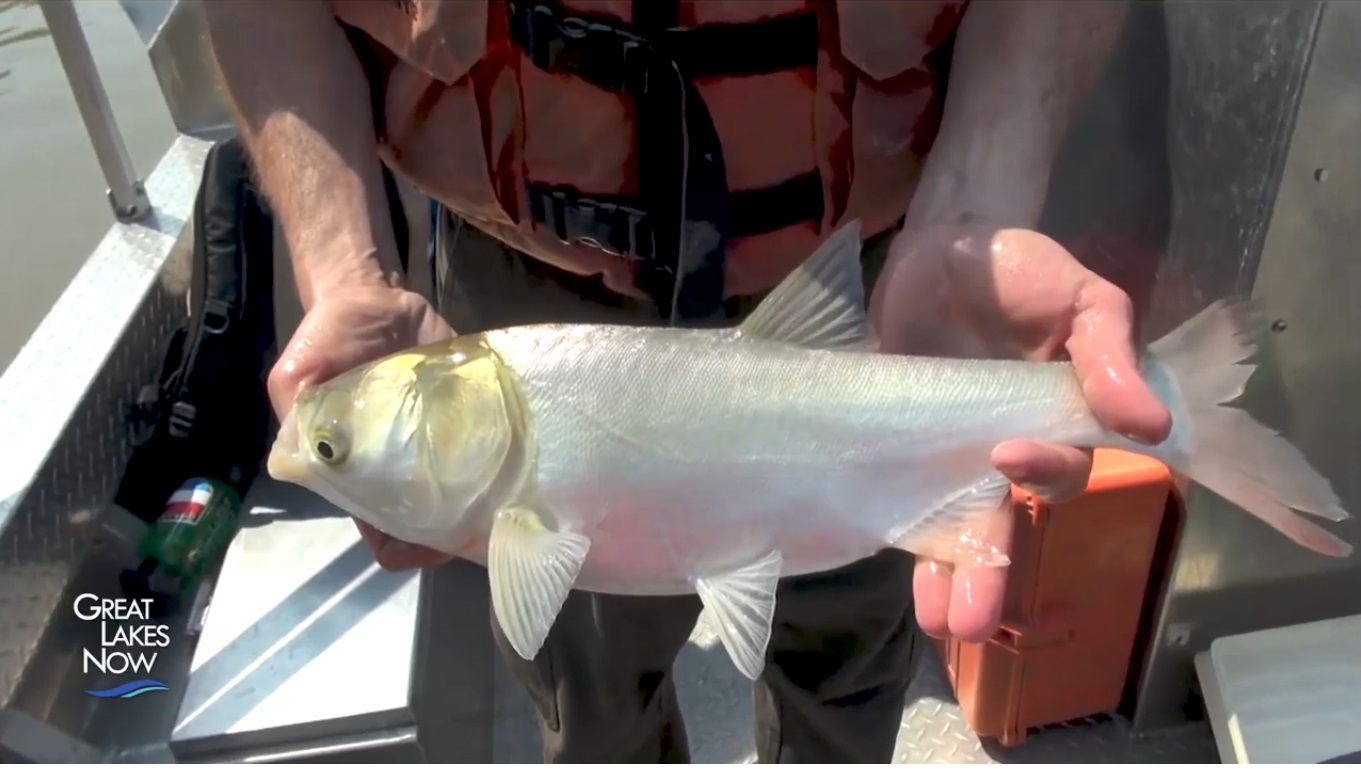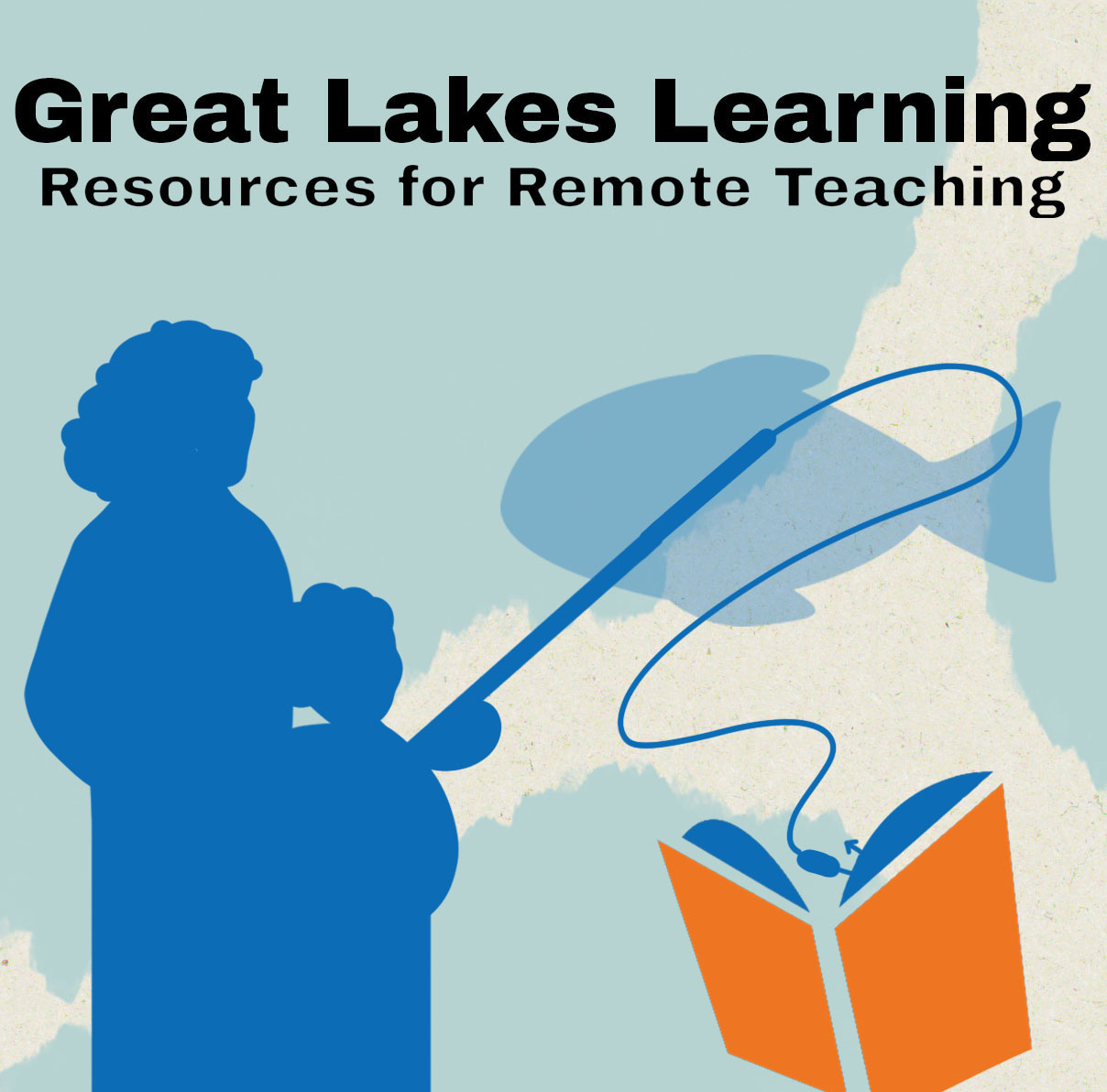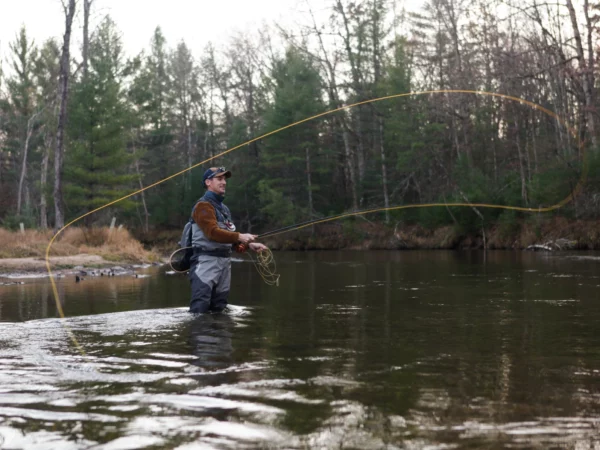
 As the author of Great Lakes Now’s Collection of Lesson Plans, educational consultant Gary Abud Jr. is now providing more support for parents, teachers and caregivers who want to incorporate Great Lakes learning into their time with children and students. His series of writings can be found HERE along with the lesson plans and a Virtual Field Trip.
As the author of Great Lakes Now’s Collection of Lesson Plans, educational consultant Gary Abud Jr. is now providing more support for parents, teachers and caregivers who want to incorporate Great Lakes learning into their time with children and students. His series of writings can be found HERE along with the lesson plans and a Virtual Field Trip.
Interstate efforts to address the invasive carp species, which have been making their way into the Great Lakes for some time now, have been mounting since the fish have been found in various parts of the Great Lakes waterways.
What makes these fish populations a threat to the Great Lakes ecosystem also teaches an important lesson for understanding the way that viruses spread and how social distancing is helpful—the numbers say it all.
Watch Great Lakes Now’s segment “Asian Carp and the Great Lakes”:
API key not valid. Please pass a valid API key.All in the Data
Exponential curves are everywhere these days. They are the graphs we see in the headlines, which curve steeply over a short amount of time, showing the number of reported cases of and deaths from COVID-19. They are also the curves we are trying to flatten out with social and physical distancing.
These graphs are often used to show population change, because the dynamics of a population tend to follow exponential growth and decay patterns. These graphs can also visualize how the population of one species affects another, including ones that are hard to directly observe.
One great example of this is with an invasive fish species known as the Asian carp.
In our series of lessons about the Great Lakes, you can:
- Learn about the population dynamics of fish,
- Look at the impact of human activity on native fish populations, and
- Explore the invasive Asian carp species affecting the Great Lakes.
Watch Great Lakes Now’s segment about how to identify types of invasive carp:
API key not valid. Please pass a valid API key.Through mathematical modeling of a population—essentially, taking data over time and graphing it—we can begin to see patterns emerge. With those patterns, we develop models. And with those models we can run comparisons to new situations and make predictions about what might happen in unknown conditions.
That’s why we created a hands-on activity you can do at home to learn about population dynamics and mathematical models as part of our lesson on fish population. Try this activity out at home and you might just find that everyone understands why it’s necessary that we stay away from each other for a while.
Modeling Predator and Prey Populations
The full lesson starts out by introducing you to various fish species in the Great Lakes and how some have declined. Then, in the second activity, you will be running a simulation to see how a predator fish species (walleye) affects the population of a prey fish species (perch). Finally, the lesson wraps up by asking learners to consider the effects that other forces would have on the fish populations.
You’ll see a template for a card game in this lesson, where you’ll cut out walleye and perch cards to do your modeling in the simulation. Once you have the specified number of each card made, you’ll mark off a one-square-foot area of tabletop and then begin playing the game.
You’ll have perch cards spread out in the area representing the prey population and walleye cards for the predator population. To simulate the walleye trying to catch the perch, you’ll toss/drop the walleye card into the area where the perch are and keep track of how many fish live/die in a data table that you can print off here and on a graph that you can print off here.
The rules of the game are simple:
- If the walleye catches three perch, it lives and reproduces; if not, it dies. Any surviving perch reproduce.
- Each round, double the number of surviving fish by adding more perch to the area and double the number of surviving walleye by throwing additional walleye cards in the next round.
- If all the walleye die off in a round, the next round starts again with one walleye to simulate a new fish entering the area.
- Play the game through at least 12 rounds (one data table) and up to 24 rounds (two data tables)

Teachable Moments
It doesn’t matter if your child is in kindergarten or high school, this activity will help them learn a variety of things. Consider the following pointers to maximize learning:
Discuss as You Play. You’ll notice that it takes several rounds before the predator catches enough prey to survive and reproduce. As you play, ask your child what they notice is going on, what they predict will happen, and what patterns they notice.
Focus on Numbers. With younger children, this is an opportunity to practice accounting, arithmetic and graphing—you may need to assist them with graphing each population. With older students, here is a chance to discuss the shape and slopes of the graphs and how they relate to each other.
Change the Arrangement. Rerun the first few rounds of the game with different disbursements of the prey population cards in the area. Try clumped (all the perch closely grouped together), uniform (the perch are evenly spaced out), and random. Then, discuss how the way the prey are dispersed affects their survival.
Go High Tech. The wolf and moose populations on Isle Royale are another great example of population dynamics. Use this online simulation to investigate the relationships between predator and prey populations.
Connect to COVID-19. Discuss with your child how this activity compares and connects to the coronavirus (as a predator) and human populations (as the prey) in the case of the current pandemic. Ask or discuss with them how this activity can model the effects of social/physical distancing.
Explore More Invasive Species. Once students understand the concept of population dynamics, learn about zebra mussels or explore other lessons on the effects of commercial fishing and Asian carp on the Great Lakes ecosystem.
Watch Great Lakes Now’s segment on zebra mussels:
API key not valid. Please pass a valid API key.Having done this activity with my own kindergartner and high school students, I can attest to the teaching power it has for not only understanding why invasive fish species pose a threat to the native species in the Great Lakes, but also how it helped me explain why right now she can’t go to school or play with her friends.
Remember, a picture is worth a thousand words and we can’t really “see” the virus around us. However, it’s also through modeling the relationship between populations that we can truly appreciate the gravity of and respond to the invasive species in the Great Lakes—and our current pandemic.
Catch up on other Great Lakes Learning tips and lessons:
Great Lakes Learning: How to clean up an “oil spill” at your kitchen table
Great Lakes Learning: 5 ways to teach your child about groundwater
Great Lakes Learning: Plan a destination dinner on a Great Lakes island
Featured image: A man holds out a silver carp, one of the invasive Asian carp species threatening the Great Lakes. Photo from Great Lakes Now episode 1006.




